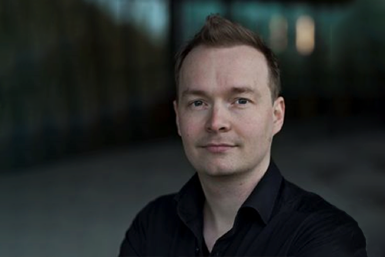|
By Elizabeth DuPre and Kirstie Whitaker This month we continued our Open Science Demo Call series with a focus on this year’s OHBM annual meeting in Singapore, and the many ways that OHBM members promote open science at the meeting. We heard from Michele Veldsman, Ayaka Ando, and Aki Nikolaidis from the student and postdoc special interest group; Greg Kiar and Anisha Keshevan from the open science special interest group; and Nils Muhlert from the communications committee.
0 Comments
BY NIKOLA STIKOV AND JEAN-BAPTISTE POLINE
(IN CONSULTATION WITH THE OHBM PUBLISHING INITIATIVE COMMITTEE) The current academic publishing norms impose many constraints on how and what we publish without fully embracing the new web-enabled dynamics. The emergence of the internet as the de facto publication medium, and the availability of open source technologies for handling the hosting and peer review process, have made it possible for organizations such as OHBM to experiment with innovative publishing platforms and to host high-quality research objects while promoting reproducible and open science. With Aperture, OHBM plans to open up to a more diverse approach in communicating academic research, bringing transparency and interactivity to the publishing process. While initially our focus will be on reviews, tutorials and educational materials, we foresee using this format to incorporate computational notebooks, interactive plots, software, data, and post-publication peer-review to create living, reusable and reproducible research objects. We hope to have a beta version of Aperture in time for the Rome meeting in 2019. By AmanPreet Badhwar
“In a forest of a hundred thousand trees, no two leaves are alike. And no two journeys along the same path are alike.” ― Paulo Coelho --- See Daniel Margulies' keynote speech here: www.pathlms.com/ohbm/courses/8246/sections/12540/video_presentations/115825 --- My first OHBM annual meeting experience was in 2015. I did not know many researchers in the field, having just started my postdoc in human brain imaging. On top of that, I was attending OHBM 2015 without my postdoc supervisor in tow (who knew the community well), and worried about not finding my place in the human brain mapping community. Luckily, I had met Daniel Margulies a few months prior to OHBM 2015. Not only did he make it a point to introduce me to the community at this particular annual meeting, but I also found myself happily involved in the many grassroot initiatives of the Neuro Bureau: ranging from brainhacks to sci-art exhibits to open science initiatives. Fast-forward to today, I have developed my own unique voice in the OHBM community, and it is in large part due to guidance from Daniel and his free-spirited compatriots during those formative moments in time. I have had the opportunity to collaborate with Daniel on several projects, both scientific and sci-artistic, and recently had the pleasure of interviewing him at the inaugural BrainHack School 2018 in Montreal. By Shruti Vij “I have always loved the idea of not being what people expect me to be!” - Dita Von Teese.  Professor Bea Luna Professor Bea Luna --- See Bea Luna's keynote OHBM2018 lecture here: https://www.pathlms.com/ohbm/courses/8246/sections/12540/video_presentations/115831 --- There isn’t another stalwart in neuroscience that this quote is better suited to describe. Be it her expertise in developmental cognitive neuroscience, her championing of novel techniques such as concurrent PET-MR scanning, her vocal demeanor or her punk rock persona! Bea Luna’s research persona lends an overwhelming sense of success in being not only innovative but also purposeful in her dogged pursuit of making one of the toughest periods in life - adolescence - better understood. She has to her credit hundreds of articles and many prestigious grants and awards, in addition to being the President of FLUX Society. With such lofty achievements, one might expect her to be a sombre intellectual but one is easily surprised by her bubbly and inviting personality! This article probably does not reflect my personal excitement at being able to interview such an amazing role model and to have so many take-aways from our conversation was definitely a bonus! What’s more, as you read on, you will discover that to be you in your own way is what leads you to success! Something that the world of academics needs to stop and think about while being in the rush to achieve the next big thing!  Martijn van den Heuvel Martijn van den Heuvel --- See Martijn van den Heuvel's keynote OHBM2018 lecture here: https://www.pathlms.com/ohbm/courses/8246/sections/12540/video_presentations/115834 --- Martijn van den Heuvel heads the Dutch Connectome Lab, part of the Complex Traits Genetics Lab at the VU University in Amsterdam. The goal of his research is to understand the association between brain complexity and brain function in health and disease. We had the pleasure to interview Martijn and find out more about his career, and also get a sneak preview of his keynote lecture at OHBM 2018 in Singapore. |
BLOG HOME
Archives
January 2024
|
 RSS Feed
RSS Feed